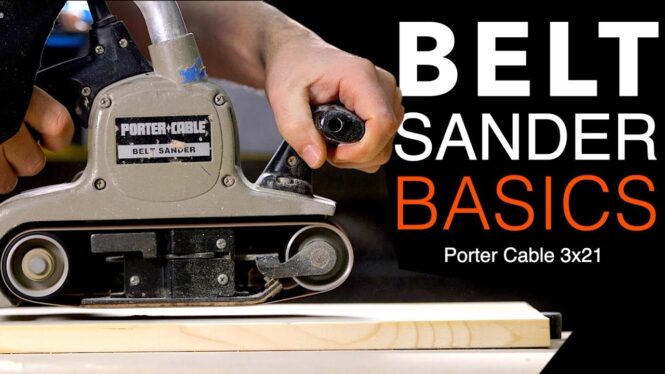 [ad_1]
[ad_1]
This post may contain affiliate links which means I may receive a commission for purchases made through links. Learn more on my Private Policy page.
A Comprehensive Guide to Portable Belt Sanders
Choosing the Right Portable Belt Sander
Portable belt sanders are an essential tool for any woodworking enthusiast, as they provide efficient removal of material and can help rough out wood surfaces before using a random orbital for a smoother finish. These electric-powered sanders feature revolving sanding belts wrapped around two rollers. They are classified by the width and length of their belt, with common sizes like 3×18, 3×21, or 4×24 inches.
Choosing the right belt sander for your needs depends on the type of projects you work on. For larger tasks, a 4×24 sander provides more surface coverage, whereas a more compact 3×18 sander is better suited for smaller projects. If you do a bit of everything, a versatile 3×21 belt sander might be more suitable for your needs.
Understanding and Adjusting the Belt Assembly
The portable belt sander features a tension lever that releases the belt when needed. The back roller is the drive roller connected to the motor, while the front roller serves as both a guide and tracking adjustment. To best utilize your belt sander, it’s crucial to know how to replace and adjust the belt.
Belt sanders use two kinds of belts: directional and bi-directional. Directional belts have a seam that allows them to operate in one direction, while bi-directional belts can be installed and used in any direction. Check the inside of the belt or the packaging for arrows indicating the direction.
To install a belt, align the edge of the belt with the rollers and lock the tension lever. Next, turn the sander upside down to examine the belt’s tracking and adjust the screw if needed. A well-aligned belt will stay on track without deviating from the rollers.
Using Effective Sanding Techniques
Portable belt sanders can remove material rapidly, so it’s important to follow some techniques to avoid potential damage or injury.
1. Always keep a firm grip on the sander with both hands, as its power and forward-moving direction will try to jump out of your hands.
2. Gently lower the sander onto the material with the back roller making contact first, followed by the front. Keep the sander moving to prevent gouging the workpiece.
3. Sand in the direction of the wood grain and overlap slightly with each pass. Be sure to work through different levels of sandpaper for optimal results.
Additional Tips for Using Your Portable Belt Sander
Dust Collection and Air Filtration
The dust collection bags that come with most portable belt sanders are not always effective, and it is advised to use an external vacuum system for better results. If you have any questions regarding dust collection or air filtration, don’t hesitate to ask or seek advice.
Maintaining Safety and Preventing Damage
Belt sanders have a tendency to damage their cords, which can be dangerous and costly. To avoid this, ensure that the cord is always placed out of the way during use. Draping the cord over your shoulder is one option to keep it safe.
Proper Maintenance for Your Belt Sander
Sanding belts can become clogged with sawdust, reducing their effectiveness. To rejuvenate a dirty belt, use an abrasive belt cleaner to remove the sawdust and restore its performance. Regular maintenance and cleaning will ensure a longer lifespan for your portable belt sander.
Conclusion
In conclusion, portable belt sanders are powerful and versatile tools that can make your woodworking projects more manageable. With the proper understanding of their mechanics, sanding techniques, and maintenance, you will be able to use your belt sander efficiently and safely. Remember to choose a model that best caters to your specific needs and to ask for help or advice if needed. Happy sanding!
This post may contain affiliate links which means I may receive a commission for purchases made through links. Learn more on my Private Policy page.
[ad_2]
Source link

